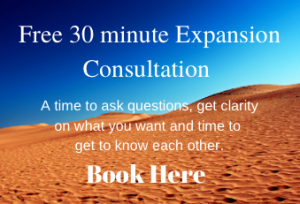Haters are usually thought of as people who greatly dislike and criticize a person, group or thing. Haters are are often talked about, shamed and blamed for many of the problems in the world. As we look for resolution we often overlook the part of us that is secretly a hater too. We may be hating ourselves or others who we believe are ruining our lives. We may be hating ourselves for wondering if bombing, exterminating and imprisoning haters might be the best way to get rid of them. We also may be hating the vulnerability and powerlessness we feel about not having control over the thoughts, feelings and behavior of others in world. What if we decide to acknowledge and embrace the hater within? What if acknowledge the reflection of hate that we see in the world to learn more about ourselves and others? What if we set our hater free to be a loving catalyst for the changes we want to see in the world?
Examples of how to embrace and set our hater free.
- Releasing the belief that hating is bad or wrong. Bringing understanding into hate as an emotion that rises up inside to alert us that it time to make a change. It starts with irritation, annoyance, frustration, anger and eventually grows to hate and crisis if we do not respond to ourselves. Wherever we find ourselves hating we can embrace, express and love it back to love and wellness.
- Allowing the hater within to express how it thinks, feels and behaves. Once we learn how connect and embrace the hater inside we can bring compassion and love to any hateful condition. A great exercise is to find a safe space to express the word hate. Start by pronouncing the word out loud as haaaaaaaaaa-te (sounds like hay-te).Then turn up the volume (hitting some pillows or yelling it into a cupped hand can speed up the process). Notice how expressing the sound opens up a pathway from the throat down to the spine. Now listen while we let the hater speak. Respond when we are ready. Vibration and interaction brings love, compassion and understanding to wherever we want and need it.
- Engaging in lots of physical, mental and emotional movement. Dancing, singing, running, walking, breathing and whatever shifts our vibration to alignment with self and source. This creates space for something new to happen and change beliefs such as haters are “just who they are” to “all beings are love and always will be”.
- Staying connected to ourselves, our source and the internal guidance system that we each have to guide us to peace, love and freedom.
- Noticing if we are trying to ignore our true feelings about haters. Ignoring makes hate crop up with greater force and persistence as in mass shootings, growing numbers of hate groups and other forms of unrest and violence.
- Acknowledging that we live in an addicted society that promotes the avoidance of feelings. Much of our society tries to drink, drug and bomb hate away. Pushing parts of ourselves away drains our power and can leave us feeling powerless and hateful. Leaders such as Diamond and River Jameson, founders of the leading edge process, Living Freedom, show us how taking full responsibility for reclaiming the reflection of the hate that we see in our world. Taking full responsibility is the key to bringing forth a new context of living that supports love wellness for all beings.
- Learning not to take our hater personally. Letting go of using haters (whether inside or out) for keeping the addictive cycle of hatred going. Releasing fixation on hate to focus our energy on allowing resolution.
- Noticing if we are carrying peace signs along with hate signs. Hate signs about corporations, politicians or whoever we think is disrupting our peace. The vibrational energy we have for whatever sign we carry perpetuates more of what we want or do not want
- Reaching out in conversations with others. Asking questions about the motivation behind hate. What is behind wishing someone would die as a way to resolve an uncomfortable condition? Behind every hater is a story. We all are love no matter what the evidence.
- Envisioning a loving and peaceful world. Trusting that the hate and crisis in the world is part of what is ultimately guiding us to love.
- Asking powerful questions such as what is the nature of experiencing a world free of hate?
- Remembering we do not need to have all the answers. Wherever there is a problem there is a resolution.
To the power of our emotions,














October 30, 2017
0 Comments